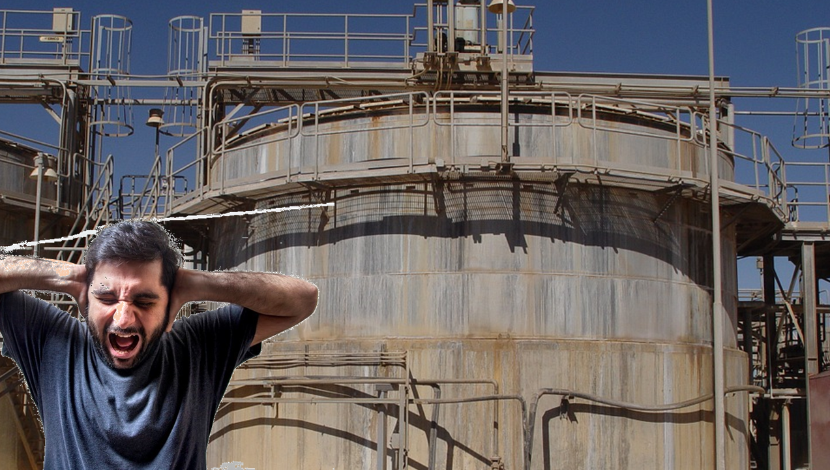“The risks that scare people and the risks that kill people are very different.” — Peter Sandman
I often wonder if work in process safety is a misallocation of resources.
The leading cause of work-related fatalities is transportation, at about 40%. The next three (of seven causes identified by the Bureau of Labor Statistics), all at about 15% each, are slips, trips, and falls, contact with objects, and workplace violence.
The two BLS categories that are related to process safety—harmful exposures and fire and explosions—are perennially the lowest causes of work-related fatalities.
Given that, would our efforts be better directed at driver safety or more general issues of workplace safety?
What About the Chemical Industry?
The chemical enterprise is different from workplaces in general. One would expect the causes of fatalities to be different, and they are. Transportation and workplace violence are causes, but not leading causes. The leading causes of fatalities in the chemical enterprise (petroleum products, chemical manufacturing, and plastics manufacturing) are slips, trips, and falls, contact with object, and, no surprise, harmful exposures.
Fires and explosions? Not so much.
So, the need for process safety in the chemical industry is not driven by risk. What then?
Dread
People are afraid of hazards that are not likely to kill them. Gerd Gigerenzer tells us that psychology has an answer: the fear of dread risks. A dread risk is a situation where many people die within a short time. It is not the fear of dying, but the fear of dying suddenly with many people in a brief period.
The causes of death that kill people one at a time don’t provoke the kind of fear that mass fatalities do. That’s why terrorism is so effective. It’s not that people are killed suddenly and violently. That happens hundreds of times a year in the U.S. workplace. It’s that so many die, all at once. Terrorists inflict their initial damage, and then for the survivors, there is secondary damage of living with the knowledge of that event.
What do we dread in the chemical industry? Not slips, trips, and falls, or contact with objects, even those are the leading causes of death and injury in the chemical industry. No, we dread explosions and harmful exposures, the concerns of process safety.
Industrial Catastrophes
I define an industrial catastrophe as one that occurs in a manufacturing environment and results in at least 10 fatalities.
Why ten?
The fear of hazards that kill ten people is much more than ten times higher than the fear of hazards that kill one person. The fear of hazards that kill a hundred people is more than the fear of hazards that kill ten people, but not an order of magnitude higher. Research shows that there is no difference in the fear of hazards that kill a thousand people and the fear of hazards that kill a hundred people.
What Causes Industrial Catastrophes?
I teach a graduate-level class on process risk management. The first assignment of the semester is for each student to do research on industrial catastrophes and create a list of 10 industrial catastrophes. Their list should include at least one from the previous year, at least one from the 19th century or earlier, and at least one from at four different continents. They never have any trouble meeting those criteria. We have been suffering industrial catastrophes since the Industrial Revolution began in the late 18th century.
Every semester, despite a lot of duplication between lists, the students collectively identify around 150 unique catastrophes. And every year, the leading cause of the industrial catastrophes identified by these students is fire and explosions. Year after year, about three-quarters of the industrial catastrophes identified are the result of fires and explosions. The second cause, year after year, is harmful exposure, which accounts for about 15% of the listed industrial catastrophes. The remaining causes (contact with objects, transportation, slips, trips, and falls, and workplace violence) only make a few student’s lists.
Process Safety is About Risk
The leading causes of industrial catastrophes are fires and explosions, and harmful exposures. These are the concerns of process safety. They are not the sources of risk, but the sources of dread.
It is rare for a process hazard analysis or a layer of protection analysis to uncover a scenario that invokes dread – 10 or more fatalities. These tools tackle risk. When they are insufficient, we can turn to other tools, like Quantitative Risk Assessment.
We do not have a tool for doing Quantitative Dread Assessment.
Dread is Real. Keep It In Mind.
Morally and ethically, I am convinced that 10 fatalities are equally bad, whether they occur one at a time or all at once. That doesn’t change the fact that most people are more afraid of a hazard that could kill 10 people at once than they are of a hazard that could kill 10 people one at a time. The fear is real, even if it is not rational. We should all keep that in mind as we lead or conduct process safety risk assessments.
